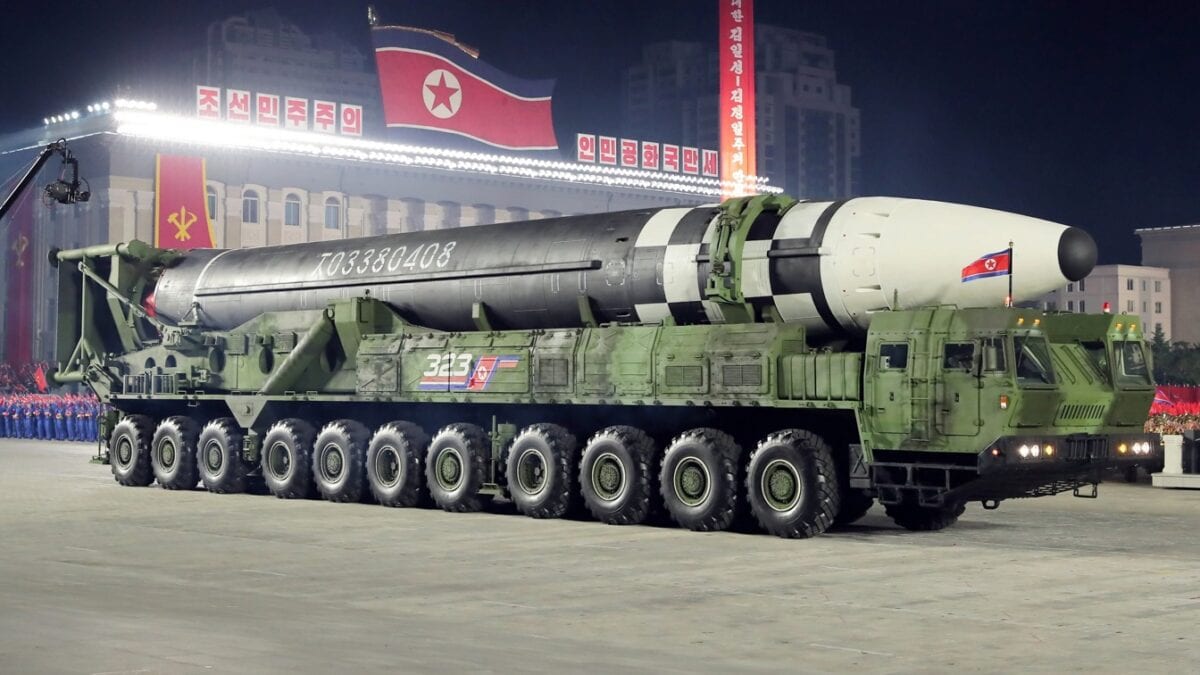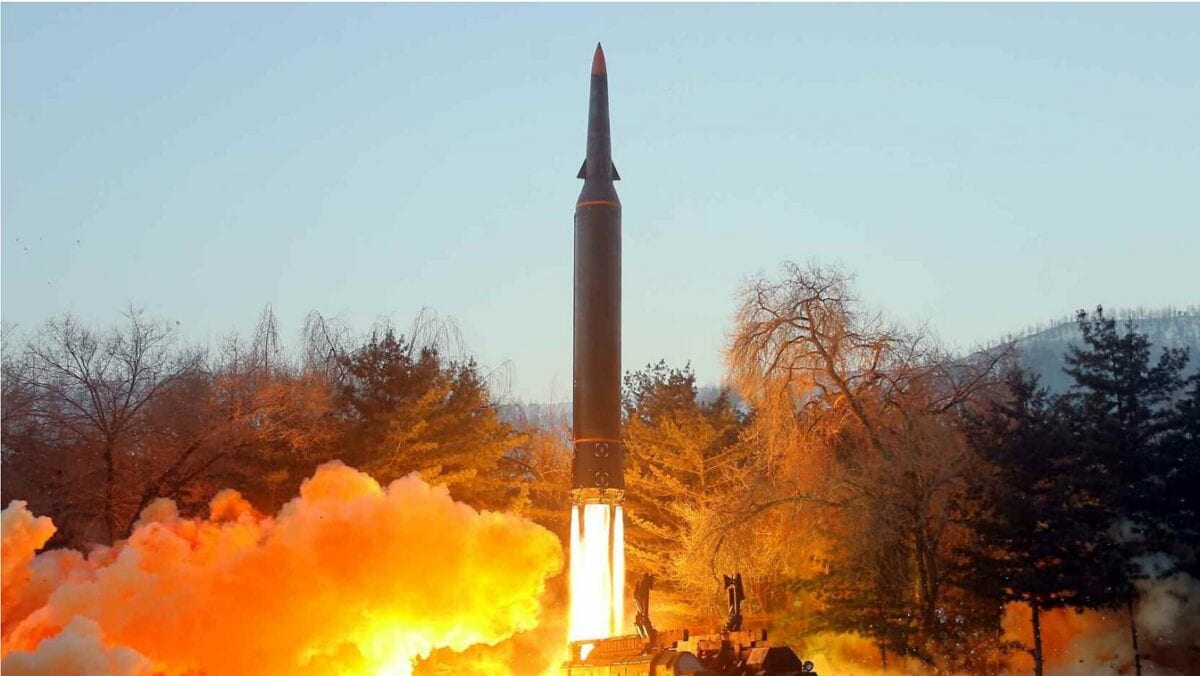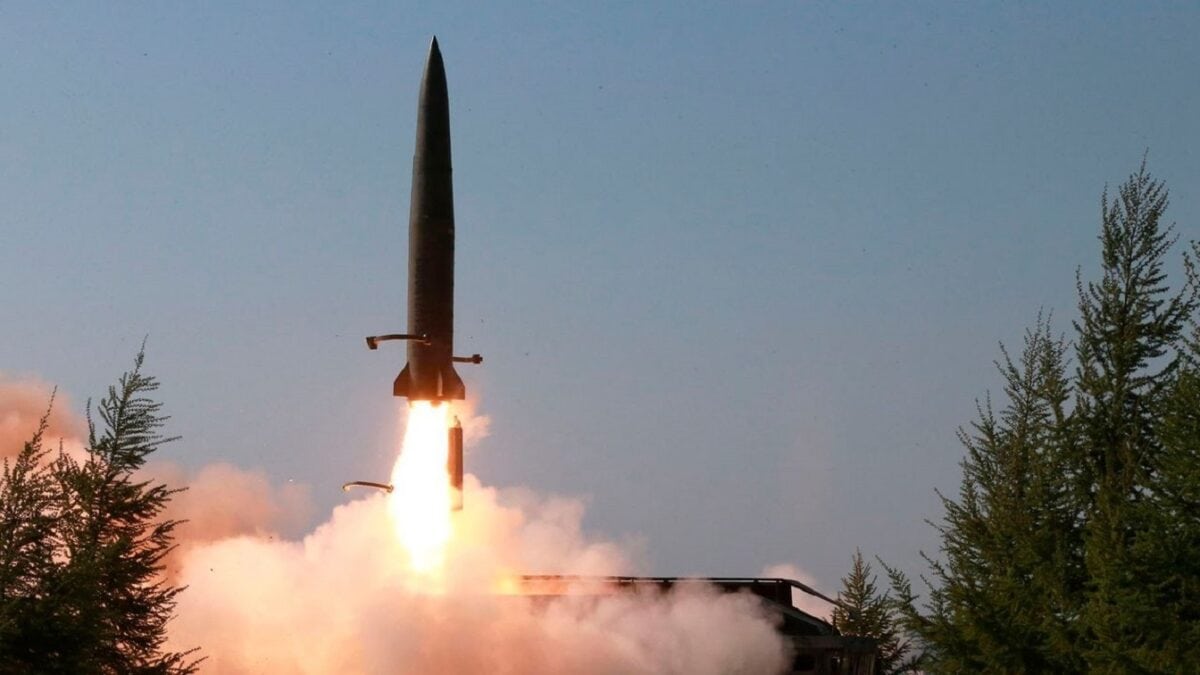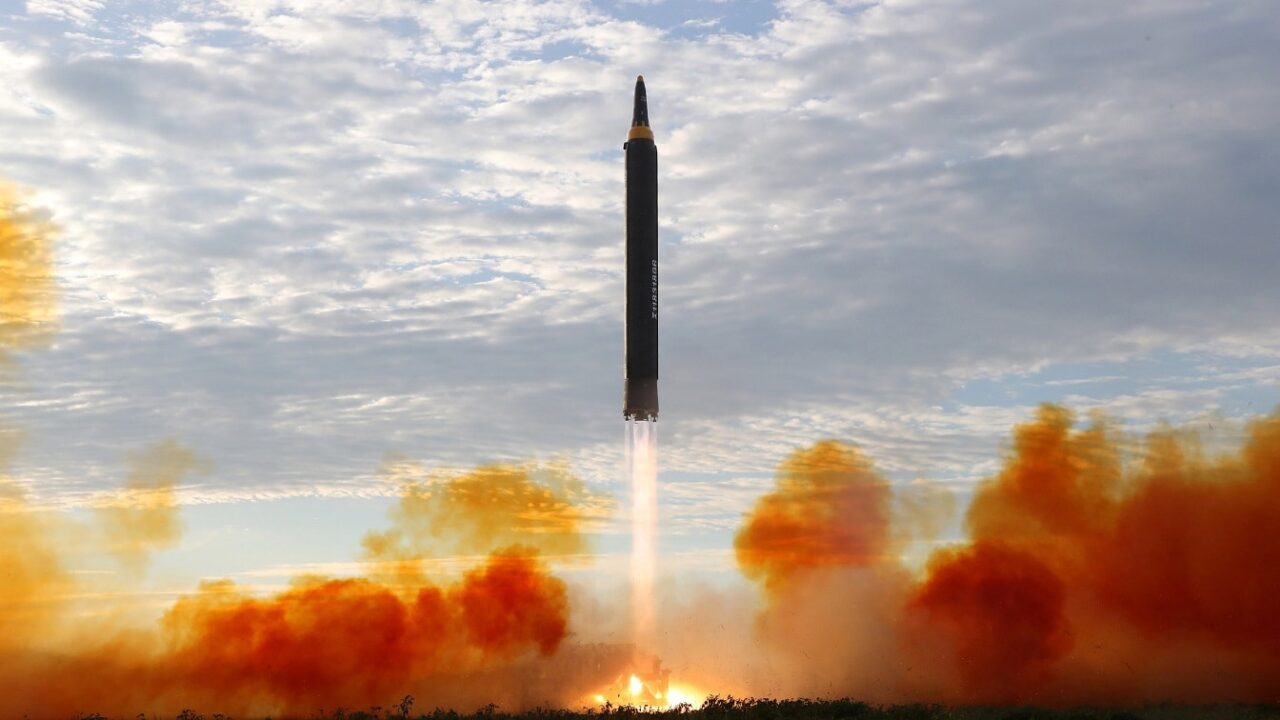North Korea has gone on a missile testing spree, nearly a dozen so far this year. However, the last two—launches on February 26 and March 4—are now thought to be of intercontinental ballistic missiles, even though not shot at full range. The Defense Department opined that the purpose “was likely to evaluate this new system before conducting a test at full range in the future.”
The Biden administration offered a routine denunciation. Said Pentagon spokesman John Kirby: “the United States strongly condemns these launches, which are a brazen violation of multiple United Nations Security Council resolutions, needlessly raise tensions, and risk destabilizing the security situation in the region.” The administration reportedly planned to impose new sanctions on the Democratic People’s Republic of Korea —another Washington ritual with not the slightest likelihood of changing Pyongyang’s behavior.
Indeed, the Biden administration was reduced to almost begging. The Pentagon declared that “the United States is revealing this information publicly and sharing it with other allies and partners because we believe that the international community must speak in a united voice to oppose the further development and proliferation of such weapons by the DPRK.” As if anyone believed that Kim Jong-un would be moved by “the international community” condemning his military program “in a united voice.”
The missile twice tested apparently was unveiled in the North’s October 2020 military parade. The only good news is that this missile is not thought to be capable of hitting the US. The bad news is that there is no reason to believe that Pyongyang will stop with it.
Kim imposed a unilateral moratorium on a long-range missile and nuclear testing after the 2017 “fire and fury” contretemps with the Trump administration. However, in January the North Korean Politburo declared that the “hostile policy and military threat by the U.S. have reached a danger line that cannot be overlooked anymore” and decided to reconsider “the trust-building measures that we took on our own initiative on a preferential ground and to promptly examine the issue of restarting all temporally-suspended activities.” Which suggested that ICBM and even nuclear tests were going to resume.
In the past, the DPRK would accompany a missile launch like the latest with great fanfare amid threats of doom and destruction for South Korea and the US. But not this time, which, ironically, creates greater concern. North Korea then used missile tests to press Washington to engage. In theory that could be Kim’s strategy today. After all, the Biden administration is quite busy: its domestic agenda is in shambles, political future is dismal, and international agenda is overflowing, topped by the ongoing Russian attack on Ukraine. The Korean peninsula barely warrants a mention, let alone treatment as a priority in Washington.
However, the administration already has reached out to Pyongyang, only to see its overtures contemptuously ignored or rejected. The DPRK largely cut off contact with Washington after the failure of the 2019 Hanoi summit. Kim maintained that stance toward President Joe Biden. When pressed the North repeated its standard declaration that the US had to drop its “hostile” policy. No doubt the regime sees every new criticism and sanction as further evidence of hostility.
Obviously, Kim could intend to reengage in the near future. Only he and presumably those around him know his intentions. However, in contrast to the past, nothing in the North’s behavior suggests a desire to connect.
More likely is the opposite possibility, an attempt to avoid the administration’s attention. Faced with the continuing US demand for complete denuclearization and failure to win sanctions relief from his supposed pal, Donald Trump, Kim may have decided to mount a full-scale arms build-up before again approaching Washington, only this time from a position of great strength. For instance, in December he told members of the Workers’ Party of Korea: “The military environment of the Korean peninsula and the trend of the international situation getting instable day after day demand that bolstering the state defense capability be further powerfully propelled without a moment’s delay.”
Acting now would be a smart move. Relations between Russia and the US are at a nadir, likely to only worsen. Relations between China and the US are bad, while those between China and the DPRK are much improved from the recent past. Thus, the North likely is safe from additional international sanctions and enhanced enforcement of existing penalties.
Equally important, as noted earlier, the Biden administration is badly distracted. It cannot easily handle another crisis. Issuing boilerplate statements in response to North Korean activity is the easiest course. Finally, South Koreans have narrowly elected a more hawkish president, but the new government won’t take over until May and will face an opposition-controlled National Assembly. In any case, the Republic of Korea has long allowed the US to dominate security issues on the Korean peninsula.

Image of North Korean Road-Mobile ICBM. Image Credit: Creative Commons.
Pyongyang previously unveiled its ambitious military program. At the eighth congress of the Worker’s Party of Korea, held in January 2021, Kim declared: “Our external political activities going forward should be focused on suppressing and subduing the U.S., the basic obstacle, the biggest enemy against our revolutionary development.” How so? The regime would “further strengthen our nuclear deterrence.”
He offered a laundry list of planned advances and improvements, including hypersonic warheads, ICBMs, improved warheads, multiple warheads, reconnaissance satellites, solid fuel missiles, submarine-launched ballistic missiles, tactical nukes, and unmanned aerial vehicles. He earlier used a military parade to showcase new arms and highlight the regime’s ambitions. Naturally, Kim presented these measures as defensive: “The reality shows that we need to strengthen the national defense capabilities without a moment of hesitation to deter the United States’ nuclear threats and to bring peace and prosperity on the Korean Peninsula.”
Fulfilling this long list likely is beyond Pyongyang’s fiscal capabilities, especially after two years of isolating itself to combat COVID-19, essentially imposing self-sanctions. Nevertheless, the DPRK has done much with limited resources in the past. And a joint report by the Asan Institute and Rand Corporation warned that “by 2027, North Korea could have 200 nuclear weapons and several dozen intercontinental ballistic missiles (ICBMs) and hundreds of theater missiles for delivering the nuclear weapons.”
Such an arsenal would make the North a mid-range nuclear power, alongside China, France, Great Britain, India, Israel, and Pakistan. The idea of a nuclear-free DPRK would be but a chimera. And Kim’s negotiating position would be greatly strengthened: Pyongyang could offer to give up scores of nukes and cap its program, while remaining a nuclear power, in return for the end of economic sanctions and perhaps America’s military presence on the peninsula.

North Korea’s New Hypersonic Missile. Image Credit: KCNA/North Korean State Media.

North Korea Ballistic Missile Test. Image Credit: Creative Commons.
Reinforcing this interpretation of Kim’s strategy is his retreat from economic reform. If he hoped to make a deal that would open the North to the international economy, he should maintain if not expand existing market-expanding measures. His backward shift suggests that he expects continued economic isolation and hardship, requiring greater state oversight.
The regime also has attacked foreign, particularly South Korean, culture. Kim once dallied with Disney figures and hosted a K-pop concert. Today teens who sing K-pop are being arrested. Since international economic exchange inevitably increases foreign contacts of all sorts, again the North looks to be planning for long-term isolation, launching an offensive against what it sees as dangerous outside influences.
If this proves to be the DPRK’s course, its neighbors and the US will have to prepare for North Korea as a significant and permanent nuclear power. The regional dynamic will become much more complex, even for a nominal ally such as China, which would find itself with less influence over Pyongyang.
Pressure for increased military outlays would greatly increase on both Japan and South Korea, in which more hawkish governments already are planning to spend more. Moreover, the viability of America’s policy of extended deterrence would become an issue. Once the North has the capability to target the US mainland, defending the ROK and Japan could mean the loss of American cities. Would future presidents be prepared to sacrifice Washington for Tokyo or Seoul? If the US closed its nuclear umbrellas, its allies would have to consider their nuclear options.
The Biden administration undoubtedly would prefer to avoid any more foreign policy crises. However, North Korea’s Kim Jong-un appears to have a different view. With the DPRK almost certain to continue testing ICBMs and possibly preparing a nuclear test, Pyongyang might soon force itself back onto Washington’s unwilling agenda.
A 1945 Contributing Editor, Doug Bandow is a senior fellow at the Cato Institute, specializing in foreign policy and civil liberties. He worked as special assistant to President Ronald Reagan and editor of the political magazine Inquiry. He writes regularly for leading publications such as Fortune magazine, National Interest, the Wall Street Journal, and The Washington Times. Bandow speaks frequently at academic conferences, on college campuses, and to business groups. Bandow has been a regular commentator on ABC, CBS, NBC, CNN, Fox News, and MSNBC. He holds a JD from Stanford University.

